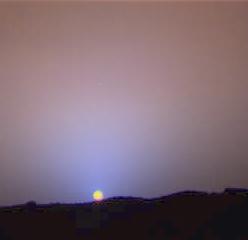This is an image showing a Martian sunset.
JPL/NASA
Mars' Thin Atmosphere
This is image of a Martian sunset illustrates just how thin the Martian atmosphere is. In this image, the Martian sky appears pink and a little bit dark at sunset. Unlike the Martian sky, the Earth's sky is blue. If you would like to know why the Earth's sky is blue, check the Quickie Question, below.
The thin atmosphere may have something to do with the cold surface temperatures because of the lack of a greenhouse effect. The thin atmosphere may also have an affect on the strength of Martian winds.
You might also be interested in:
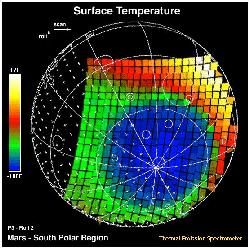
This image shows how cold the surface of Mars can be. The temperature of the surface was measured by the Mars Global Surveyor spacecraft. The scale to the left shows that purple regions are the coldest,
...more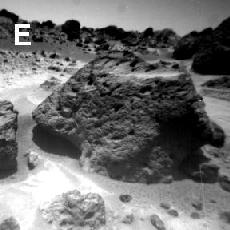
On Mars the surface winds accelerate to higher speeds than those on Earth. These winds can be whipped to an extreme during the frequent Martian global dust storms. The first weather measurements made from
...more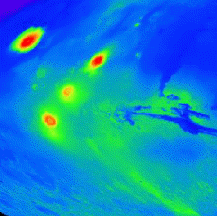
On this map of Mars, the lightly cratered Tharsis Ridge is shown, as well as the heavily cratered Martian highlands (near the bottom of the picture), and Valles Marineris to the right. The volcanoes are
...more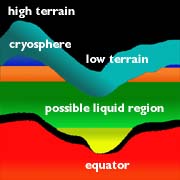
On Mars, the water is trapped, frozen, within the ground. Nevertheless, there is evidence for running water on Mars. When the water is melted and released to the surface, it will run from higher ground
...more
The drawing shows the depth at which water may be frozen into the ground. To have water running on the surface of Mars, this water region must be near to the surface. This may have happened at various
...more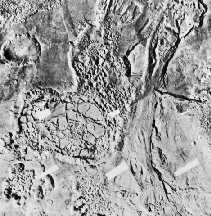
Separate from the Martian outflow channels, or the river valleys, are large Martian lakes (600 km, or ~1000 miles across) which once were part of a flood.
...more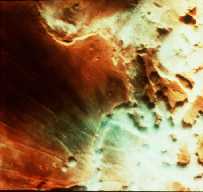
This picture shows fog on Mars. More fog has been seen in images returned by Mars Global Surveyor of the south polar region of Mars. Martian fog may have a little bit of acid mixed in with the water drops.
...more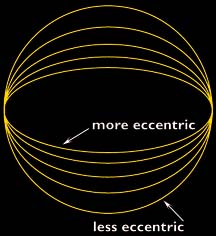
The orbit of Mars is very oval shaped. The orbit is much more oval shaped than the Earth's orbit. This means that the climate of Mars can change drastically between warm and cold.
...more
